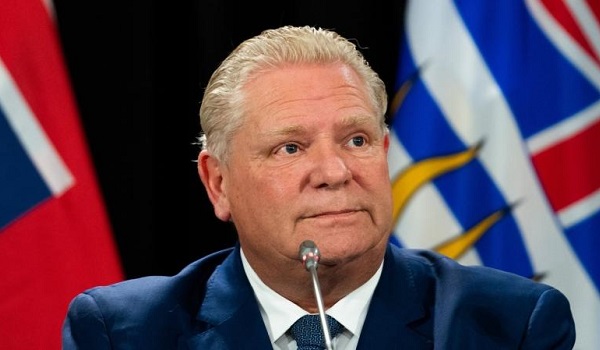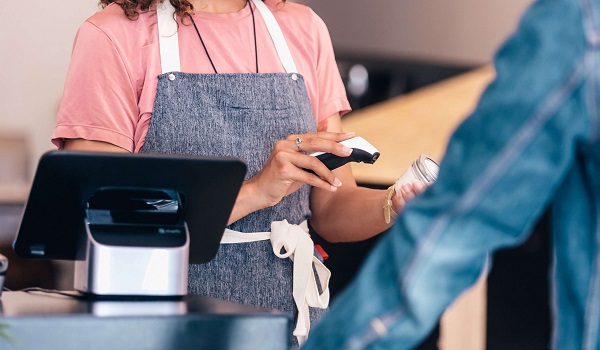Indigenous groups on border sides reaffirm their rights amid U.S.- Canada border scrutiny
As tensions rise at the Canada-U. S. border, Canadian Indigenous leaders are working with their American counterparts to remind the governments of both countries of First Nations’ inherent border rights.
On Wednesday, National Chief Cindy Woodhouse Nepinak of the Assembly of First Nations met with the leaders of National Congress of American Indians to discuss the crisis prompted by President Donald Trump’s threat of a 25-per-cent tariff on most Canadian goods and his repeated suggestions that Canada should become the 51st state.
At the address, Chief Woodhouse Nepinak stressed the importance of protecting border mobility rights. “In addition,” she said, “our territories hold vast deposits of critical minerals and natural resources that fuel industries and sustain communities on both sides of the border.”
She referenced the Jay Treaty, a 200-year-old document that enshrined Indigenous peoples’ free passage as peoples whose land was historically not bound by the borders established by colonial powers.
In 1794, Britain and the United States signed what was formally dubbed the Treaty of Amity, Commerce and Navigation, between His Britannick Majesty; and the United States of America, by their President, with the Advice and Consent of their Senate. It is better known as the Jay Treaty, named for John Jay, the U.S. official who negotiated the deal.
Among other things, the agreement allowed the free passage of “Indians” who lived on both sides of the border, for trade and commerce: “It is agreed that it shall at all times be free to … the Indians dwelling on either side of the said boundary line, freely to pass and repass by land or inland navigation, into the respective territories and countries of the two parties, on the continent of America … and freely to carry on trade and commerce with each other,” the treaty states.
“The Jay Treaty didn’t give us rights – it acknowledged the rights we’ve always had,” said Federation of Sovereign Indigenous Nations Chief Bobby Cameron.
He noted that while energy and critical minerals are key to Canada’s plans to retaliate should the tariffs come into effect in March, Indigenous groups are not being adequately represented in those talks, even though those resources are being extracted on Indigenous land.
“The treaties never surrendered our rights, but established agreements to share.”
A group known as the Jay Treaty Border Alliance represents tribal and First Nations interests on both sides of the international border and are lobbying both Washington and Ottawa in efforts to protect the Indigenous rights that were laid out in the Jay Treaty.
Tabatha Bull of the Canadian Council of Indigenous Business, who sits on the Prime Minister’s advisory council for U.S.-Canada border relations, says a Team Canada approach to the current challenges presented by the U.S. government on tariffs and trade requires a look at how it will impact Indigenous communities on the border with members living and working on both sides.
“There is a Jay Treaty that we need to keep in mind that hasn’t been honoured here in Canada,” Ms. Bull told the Globe and Mail.
After the War of 1812, Canada nullified the Jay Treaty. Subsequent treaties and Acts provided differing guidelines for Indigenous peoples’ border crossings. To this day, Canadian law on Indigenous border crossings is still in flux.
Under current policy, Indigenous people born in the U.S. require a passport to cross the border.
First Nations people living in Canada and registered under the Indian Act as status Indians can cross without a passport but they must prove at least 50 per cent Indigenous ancestry, a rule known as blood quantum. Band councils authorize letters that outline members’ maternal and paternal bloodlines.
Ontario Regional Chief Abram Benedict, one of the co-chairs of the Border Alliance, said his group is pushing to have the United States remove its requirement to prove Indigenous identity through blood quantum.
“We find it very offensive and archaically colonial that there’s no other race, no other nationality or minority that has to identify how much they are of that, other than Native American,” Mr. Benedict told the Globe and Mail in an interview.
Mr. Benedict said the Border Alliance is also lobbying for the Canadian government to acknowledge through legislation that American-born Indians have a right to entry into Canada.
“As it is now, First Nations persons born in the United States, they’re treated as American citizens, rather than First Nations people,” Mr. Benedict said.
Ms. Woodhouse Nepinak said she’s planning to be at the United Nations in New York in March “to highlight the impacts on the inherent and treaty rights, including our right to maintain spiritual, cultural, economic and social relations across borders.”
“We are peoples, tribes and nations with inherent and treaty rights to self-determination, as recognized and affirmed by both United Nations and the American Declaration on the Rights of Indigenous Peoples,” Ms. Woodhouse Nepinak told the Globe.
This article was first reported by The Globe and Mail













